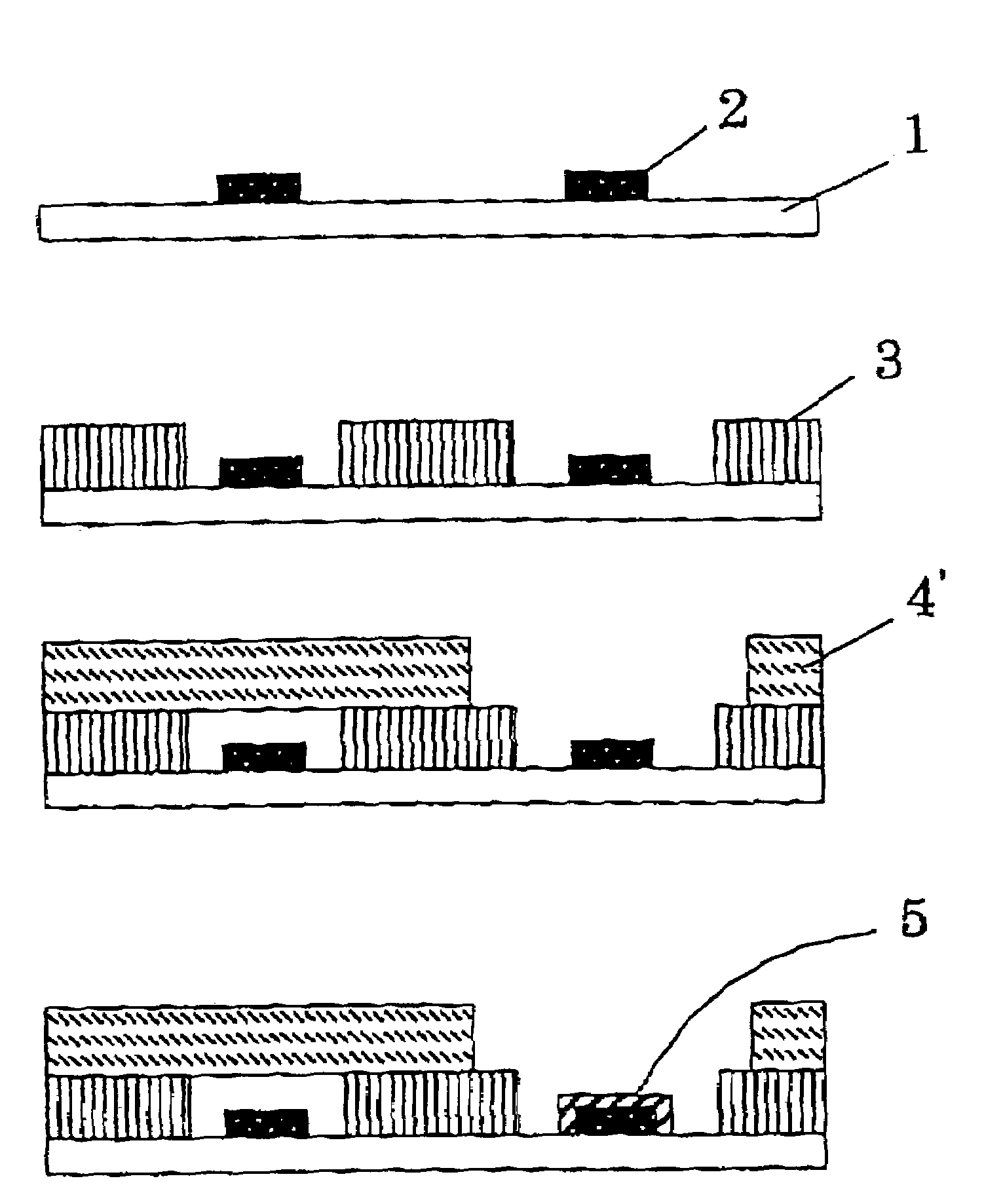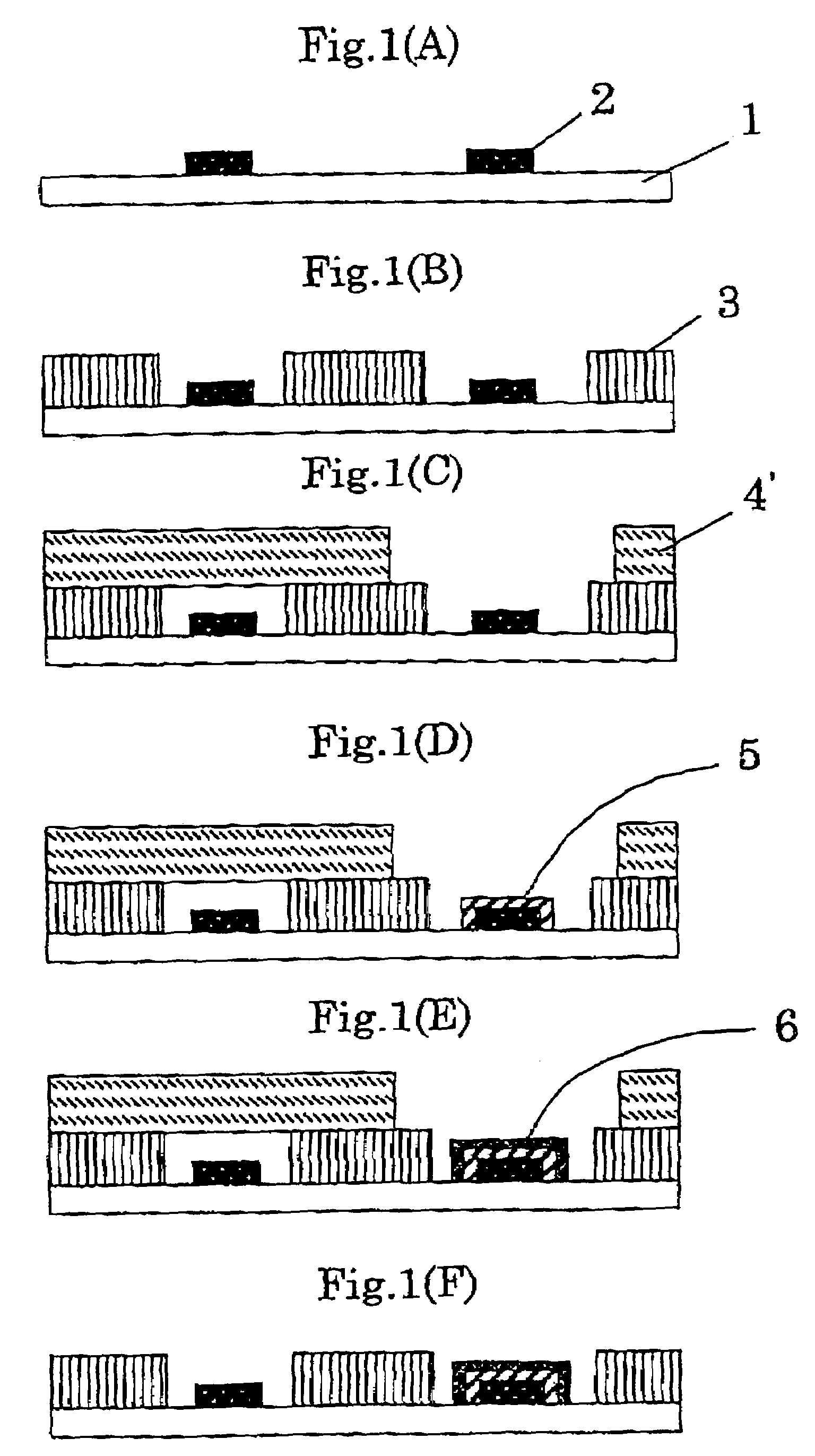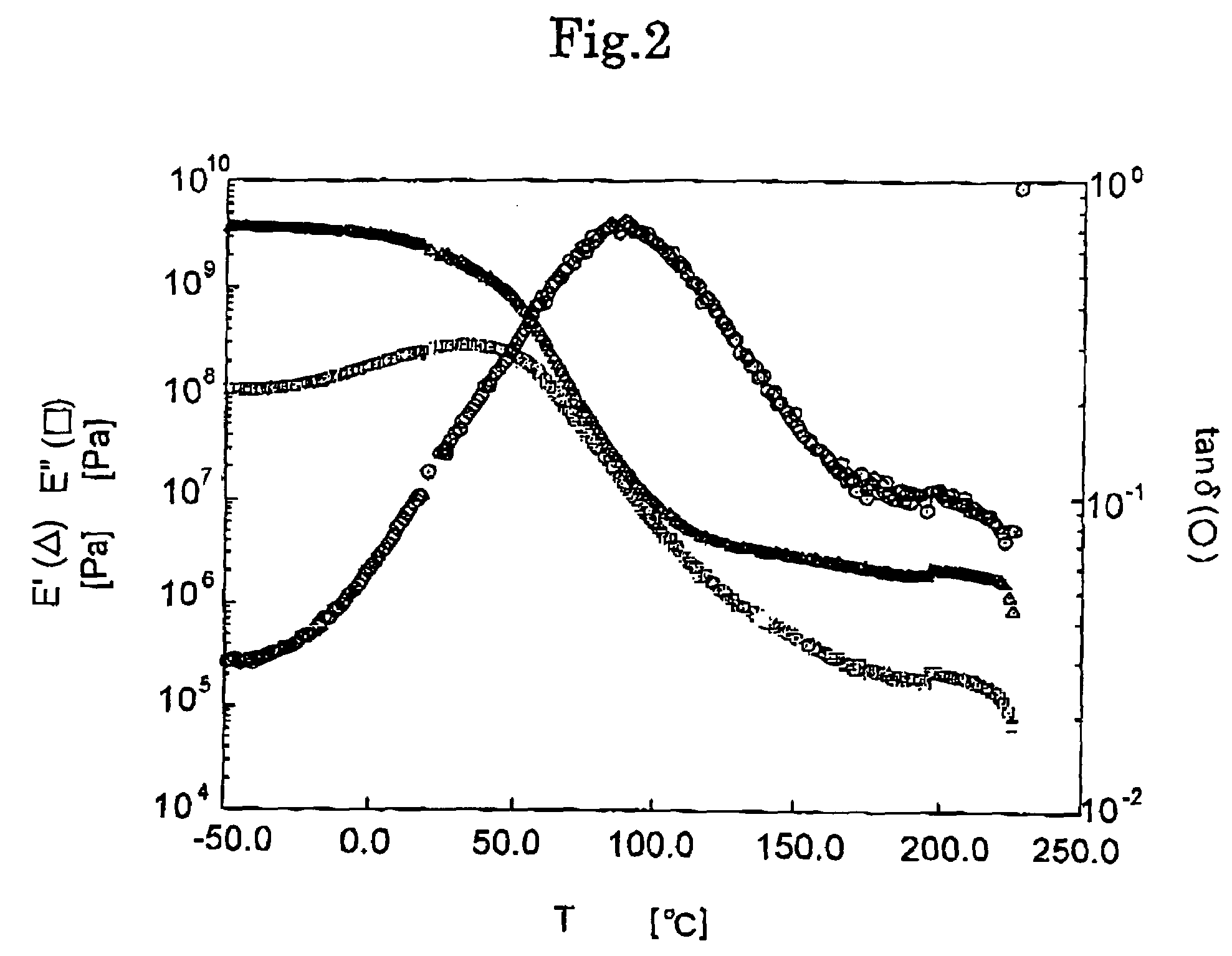Process for producing printed wiring board and photosensitive resin composition used in the same
a resin composition and printing technology, applied in the direction of photosensitive materials, instruments, photomechanical equipment, etc., can solve the problems of poor mechanical strength, poor yield of jointing, and high cost of gold plating
- Summary
- Abstract
- Description
- Claims
- Application Information
AI Technical Summary
Benefits of technology
Problems solved by technology
Method used
Image
Examples
example 1
[0091](a) A solution of the photosensitive resin composition of the present invention having the formulation of materials shown in Table 1 was obtained.
[0092](b) The solution of the photosensitive resin composition obtained in the previous step was coated onto a polyethylene terephthalate film (hereinafter, referred to as “PET”) having a (width: 380 mm×thickness: 20 μm) size so that the dried film had a thickness of 50 μm. The resultant film was dried at 100° C. using a hot-air convection dryer, and a polyethylene film having a thickness of 35 μm was placed on the dried film, followed by press-coating by means of rolls, to obtain a photosensitive element in the present invention.
examples 2 to 12
[0093]Photosensitive elements in the present invention were individually obtained in accordance with substantially the same procedure an in Example 1 except that the formulation of ingredients was changed to those shown in Table 1.
[0094]The formulations of the photosensitive resin compositions in Examples 1 to 12 are shown in Table 1. In the Table, the unit is part(s) by weight. The weight of the binder polymer is shown in terms of a nonvolatile content.
[0095]
TABLE 1Exam-Exam-Exam-Exam-Exam-Exam-Exam-Exam-Exam-Exam-Exam-Exam-pleplepleplepleplepleplepleplepleple123456789101112Binder polymer606060606060606060606060Bisphenol A polyoxyethylene—————20———20——dimethacrylate (BPE-500)Bisphenol A polyoxyethylene————4020302040203020dimethacrylate (BPE-1300)EO,PO-modified urethane——————10———10—dimethacrylate (UA-13)EO-modified trimethylolpropane———————10———10triacrylate (TA-401)Polypropylene glycol diacrylate——2010———10———10(APG-400)Polyethylene glycol dimethacrylate40—20—————————(4G)Polyethyl...
examples 1 to 8
[0096]An etching resist was formed on the surface of a copper foil of a copper-clad epoxy laminate (MCL-E-67; manufactured by Hitachi Chemical Co., Ltd.) having a size of width: 12.5 cm×length: 20 cm×thickness. 1.6 mm, and an unnecessary copper foil was etched away, and metal terminals (pads) and a circuit for wiring were formed and then, the residual etching resist was stripped to obtain a wiring board having a circuit.
[0097]A photoresist (PSR-4000; manufactured by TAIYO INK MFG. CO., LTD) was coated to the entire surface of the obtained wiring board having a circuit, and then dried at 80° C. for 30 minutes. Then, excluding the pad portions, the entire surface was exposed through a mask pattern (phototool) using an exposure machine (HMW-590; manufactured by ORC Manufacturing Co., Ltd.). The unexposed portions (pad portions) were subjected to spray development using a 1% by weight aqueous solution of sodium carbonate (30° C.) to remove the photoresist on the pad portions, thus formi...
PUM
 Login to View More
Login to View More Abstract
Description
Claims
Application Information
 Login to View More
Login to View More - R&D
- Intellectual Property
- Life Sciences
- Materials
- Tech Scout
- Unparalleled Data Quality
- Higher Quality Content
- 60% Fewer Hallucinations
Browse by: Latest US Patents, China's latest patents, Technical Efficacy Thesaurus, Application Domain, Technology Topic, Popular Technical Reports.
© 2025 PatSnap. All rights reserved.Legal|Privacy policy|Modern Slavery Act Transparency Statement|Sitemap|About US| Contact US: help@patsnap.com



